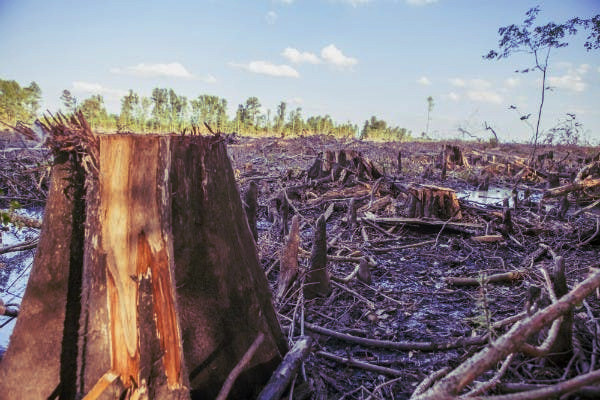 Hundreds of thousands of acres are clearcut every year in the Pacific Northwest.
Hundreds of thousands of acres are clearcut every year in the Pacific Northwest.
On February 4, 2021, I visited a recent 80-acre clearcut above the Middle Fork Nooksack River. It was typical of clearcuts in the region. Yarding logs uphill had disturbed most of the forest soil. Lots of bare dirt. Most of the slash had been burned but there was some around along with charred logs and wood. The site had been aerially sprayed with herbicide to kill off all vegetation after which it was planted with a monoculture of Douglas fir with a narrow genetic diversity. There were some fingers of residual vegetation along the riparian corridors of seasonal streams, but no trees of any consequence were left on the 80 acres. This is all perfectly legal of course.
What will happen next will be relatively predictable. There will be an explosion of non-native weeds. Already on the site I see bull thistle, St. John’s wort, yellow dock, horseweed, and butterfly bush. A lot of native plants will germinate in the next few years. Typically the logging company might herbicide the site again after a few years to knock the deciduous vegetation and ground cover back to reduce competition on the Douglas fir. After 7 to 10 years the Douglas fir will close canopy and shade everything else out. Likely this would be followed by a pre-commercial thin and then possibly one commercial thin before the entire stand is clear-cut again. Such are the current forest practices for the most part.
How can we intervene in this process using agroforestry? Read my full article.







 MICHAEL “SKEETER” PILARSKI is a life-long student of plants and earth repair. His farming career started in 2nd grade and his organic farming career began in 1972 at age 25. Michael founded Friends of the Trees Society in 1978 and took his first permaculture design course in 1982. Since 1988 he has taught 36 permaculture design courses in the US and abroad. His specialties include earth repair, agriculture, seed collecting, nursery sales, tree planting, fruit picking, permaculture, agroforestry, forestry, ethnobotany, medicinal herb growing, hoeing and wildcrafting. He has hands-on experience with over 1000 species of plants. He is a prolific gathering organizer and likes group singing.
MICHAEL “SKEETER” PILARSKI is a life-long student of plants and earth repair. His farming career started in 2nd grade and his organic farming career began in 1972 at age 25. Michael founded Friends of the Trees Society in 1978 and took his first permaculture design course in 1982. Since 1988 he has taught 36 permaculture design courses in the US and abroad. His specialties include earth repair, agriculture, seed collecting, nursery sales, tree planting, fruit picking, permaculture, agroforestry, forestry, ethnobotany, medicinal herb growing, hoeing and wildcrafting. He has hands-on experience with over 1000 species of plants. He is a prolific gathering organizer and likes group singing.